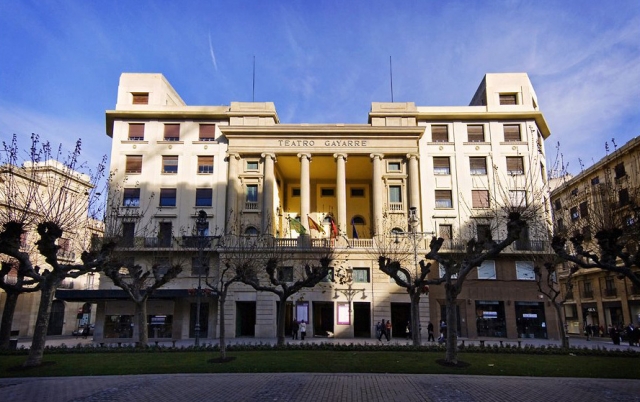What to see in Pamplona
From the moment the pilgrims step foot on the south bank of the river Arga via the Magdalena Bridge they can breathe Pamplona, but they will not enter the city until they pass through Portal de Francia (the door of France) or Zumalacárregui. Immediately, the pilgrims encounter a quiet square at the highest part of the city.
This point, known as Bastión del Redín, is the most inaccessible area of the fortress. Formerly at this spot stood a hospital for pilgrims. Today it is a restaurant, meson Caballo Blanco. The Cathedral of Santa María is the most famous monument in the city. Behind its neoclassical facade it hides treasures and gothic beauty. The graves of Carlos III and Leonor de Trastámara, the cloister and Saint Cristo de Anchiota, well worth a visit.
In the current Diocesan Museum visitors will find the old kitchen where meals were prepared for the pilgrims. Consult opening times and hours of worship. The square Plaza del Castillo is in the heart of the city. Referred to as "cuarto de estar" (the place to be) it encompasses 14,000 square metres dedicated to giving life to the people of Pamplona.
Centrally located, two establishments that were often frequented by Hemingway: The Hotel La Perla and Café Iruña. Between here and the castle, little remains. In the centre of this square there is a recently restored kiosk. One of the most famous landmarks of the city can be found next to the square.
The Palacio de Navarra (Avenida Carlos III, 1), mid-century, it is currently the head office of the government of Navarra. It is notable for its facade of Sarasate, full of sculptures and designed by the master José de Nagusia. Access is only possible for groups of between 25 to 50 people, by appointment only. Pilgrims able to dedicate a few hours to visit this wonderful land should not miss the opportunity to visit the Museum of Navarre.
Situated at the beginning of the climb of Cuesta de Santo Domingo, located on the same site as the old Hospital ‘Nuestra Señora de la Misericordia’ of which survives the plateresque facade and the surrounding chapel. The museum is divided into five floors. The ground floor is usually used for temporary exhibitions. The rest of the floors are classified chronologically.
Thus, the first comprises of prehistoric artefacts, the Ancient era and the late medieval period, the second floor is dedicated to the early middle Ages and the Renaissance period, the third covers the Baroque and the first half of the XIX, and the top floor the rest of the XIX and XX. Within its walls visitors will find "El Mosaico de Teseo" and "La Arqueta de Leyre". Closed on Mondays.
Pamplona is one of the greenest cities in Europe. The ancient gardens of Taconera and the park of Ciudadela serve as the main lungs of Pamplona. The Campus area of the University of Navarra, where the rural road bids farewell to the urban city of Zizur Menor, is just another of the many possibilities offered by the city to rest for a while and lie down on the grass.
Points of interest of Pamplona (10)
19°
27/07/2024
few clouds

- Connection by bus
- Cash machine
- Pharmacies
- Police948296850
- Local Police948420640
- Connection by train
- Supermarkets
- Taxi stops
Routes
Blog
 How to get to Sarria to do the Camino de Santiago
How to get to Sarria to do the Camino de Santiago
 Descubre la magia del Camino de Santiago Portugués por la costa
Descubre la magia del Camino de Santiago Portugués por la costa
 5 tours culturales que puedes hacer en Galicia si decides hacer un alto en el camino
5 tours culturales que puedes hacer en Galicia si decides hacer un alto en el camino
 Doing the Camino de Santiago in June: What you should know?
Doing the Camino de Santiago in June: What you should know?
Information
Points of interest
Cities & Towns | Hostels | Lodgings | Restaurants | Saddlery | Doctors | Points of interest | Bikes workshop
Contact us | Privacy policy | Cookies policy | | Terms of use | Authorship | Web Map | Consentimiento
© Copyright LA VOZ DE GALICIA S.A. Polígono de Sabón, Arteixo, A CORUÑA (ESPAÑA) Inscrita en el Registro Mercantil de A Coruña en el Tomo 2438 del Archivo, Sección General, a los folios 91 y siguientes, hoja C-2141. CIF: A-15000649
Developed and managed byHyliacom
